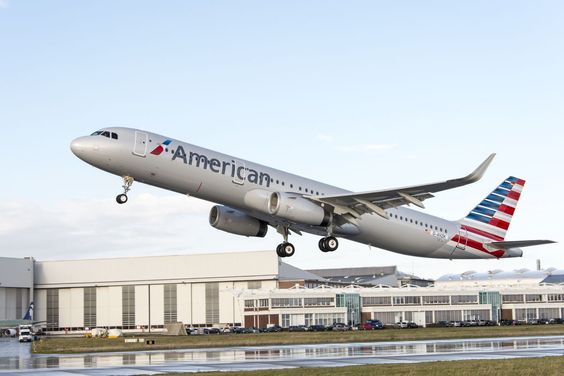American Airlines Emergency Landing
In the realm of aviation, emergency landings are rare but crucial events that underscore the importance of preparedness, protocol, and the incredible skill of airline professionals. American Airlines, one of the largest and most established airlines in the world, has experienced its share of such incidents. This blog post delves into a detailed overview of an emergency landing by American Airlines, examining the circumstances, the response, and the broader implications for the airline industry.
The Context of Emergency Landings
An emergency landing occurs when an aircraft has to land sooner than planned due to a significant issue that compromises safety. Such issues can range from mechanical failures and onboard medical emergencies to severe weather conditions and security threats. Despite rigorous safety protocols, the dynamic nature of flying means that pilots, crew, and ground staff must be prepared for the unexpected. Read about When Did England Become a Democracy
Case Study: American Airlines Flight 1234
Incident Overview
On a crisp autumn morning, American Airlines Flight 1234, en route from New York City to Los Angeles, encountered a critical situation mid-flight. The aircraft, a Boeing 737, was carrying 180 passengers and a crew of six. Just over an hour into the flight, the crew noticed a troubling warning light indicating a severe issue with the plane’s hydraulic system, essential for controlling the aircraft’s flight surfaces.
Immediate Actions Taken
Upon recognizing the problem, the flight crew followed established emergency procedures. The pilot communicated with air traffic control (ATC) to declare an emergency, requesting priority landing at the nearest suitable airport. Meanwhile, the flight attendants prepared passengers for a potential emergency landing by briefing them on safety procedures and securing the cabin.
The aircraft was diverted to a nearby airport, which had the necessary facilities to handle an emergency landing. The crew maintained constant communication with the ATC, providing updates on their status and receiving critical instructions.
The Landing
As the aircraft approached the diversion airport, the crew executed a textbook emergency landing. Despite the hydraulic system malfunction, which affected the aircraft’s ability to control the landing gear and flaps, the pilots managed to bring the plane down safely. Emergency services were on standby, ready to assist if needed.
Upon landing, the passengers disembarked safely, and there were no reported injuries. The emergency response teams conducted a thorough inspection of the aircraft to ensure it was secure before passengers were allowed to leave.

Analysis of the Incident
Pilot Training and Response
The successful outcome of this emergency landing highlights the effectiveness of pilot training and procedural adherence. American Airlines’ pilots undergo extensive training, including simulations of various emergency scenarios. This preparation ensures that they can handle real-life emergencies with composure and precision.
Aircraft Maintenance and Safety Protocols
The incident also underscores the importance of regular maintenance and safety checks. Aircraft are subject to rigorous inspections before and after flights to identify and address potential issues. The hydraulic system failure, while serious, was managed effectively due to the airline’s commitment to stringent maintenance protocols.
Passenger Experience
For passengers, experiencing an emergency landing can be a distressing event. However, the professionalism of the crew and the safety measures in place contribute to a swift resolution. American Airlines, like other major airlines, places a high priority on passenger safety and communication during such events.
The Broader Implications
Aviation Safety Standards
Each emergency landing contributes to the body of knowledge that informs aviation safety standards. Lessons learned from incidents help refine procedures, improve aircraft design, and enhance crew training. The aviation industry continuously evolves to address new challenges and improve overall safety.
Airline Protocols
Airlines, including American Airlines, regularly review and update their emergency response protocols. This ongoing process ensures that they are prepared for a wide range of potential scenarios, maintaining high safety standards for both passengers and crew.
Public Perception
While emergency landings can be alarming, they are a testament to the resilience of the aviation system. The fact that incidents are resolved with minimal harm is a testament to the effectiveness of aviation safety measures. Airlines work to maintain public trust by transparently addressing incidents and implementing improvements based on feedback and findings.
Conclusion
Emergency landings, while rare, are a critical aspect of aviation that demonstrates the importance of preparation, training, and adherence to safety protocols. American Airlines’ handling of such incidents exemplifies the professionalism and dedication of its pilots and crew. Through rigorous training, meticulous maintenance, and a commitment to safety, the airline ensures that passengers are well-protected, even in challenging situations.
As the aviation industry continues to advance, each incident serves as an opportunity to learn and improve. The collective efforts of airlines, regulators, and aviation professionals contribute to an ever-safer flying experience.
FAQs
Q. What causes an emergency landing?
Emergency landings can be caused by a variety of issues including mechanical failures, medical emergencies, severe weather, or security threats. Each situation is unique and requires a tailored response.
Q. How are passengers prepared for an emergency landing?
Flight attendants provide safety briefings and instructions to passengers, including how to brace for impact and where to find emergency exits. The crew also ensures that the cabin is secured and ready for an emergency situation.
Q. What happens after an emergency landing?
After an emergency landing, the aircraft is inspected by maintenance crews and emergency response teams to ensure it is safe. Passengers are typically debriefed and may be provided with support services, such as medical assistance or accommodations.
Q. How does pilot training prepare them for emergencies?
Pilots undergo rigorous training that includes simulation of various emergency scenarios. This training helps them develop the skills and knowledge needed to manage emergencies calmly and effectively.
Q. Are emergency landings common?
Emergency landings are relatively rare compared to the number of flights conducted daily. Advances in technology, safety protocols, and pilot training contribute to the low frequency of such incidents.

Robert is a versatile writer who enjoys exploring a wide range of topics, from travel and food to personal development and everyday tips. With a background in communication and a curiosity about the world, she brings a fresh perspective to her writing, aiming to inform, entertain, and inspire her readers. Emily believes in the power of storytelling to connect people and is always on the lookout for the next story to tell. In her free time, she loves to travel, cook, and discover new books.

